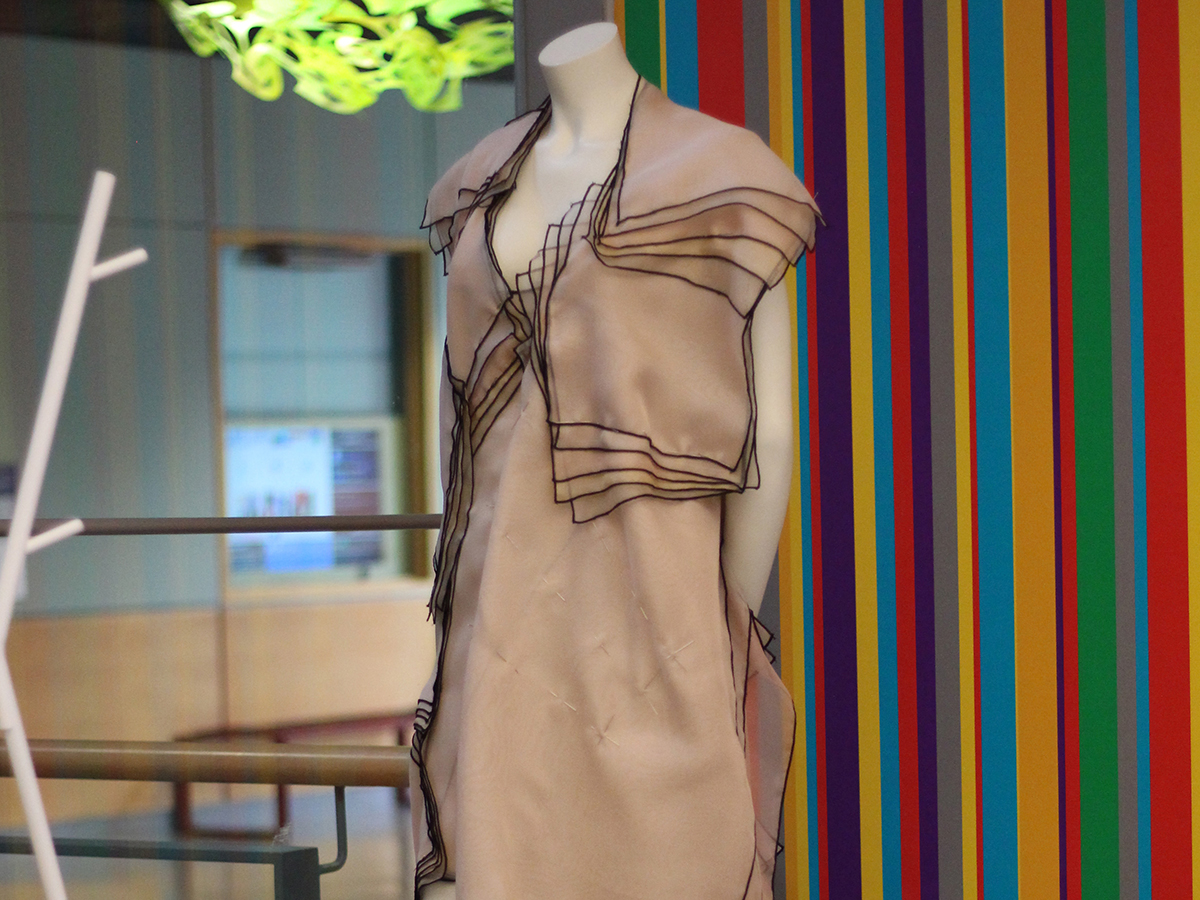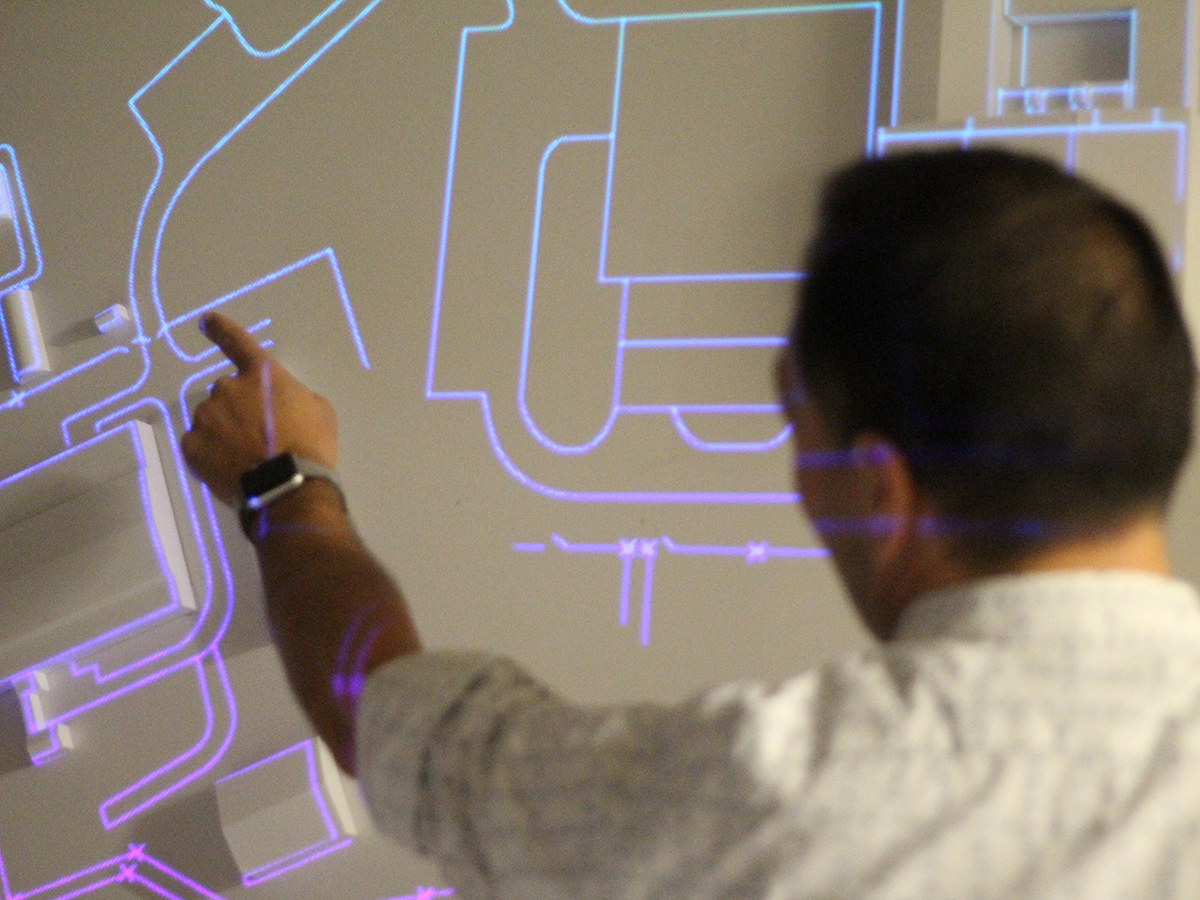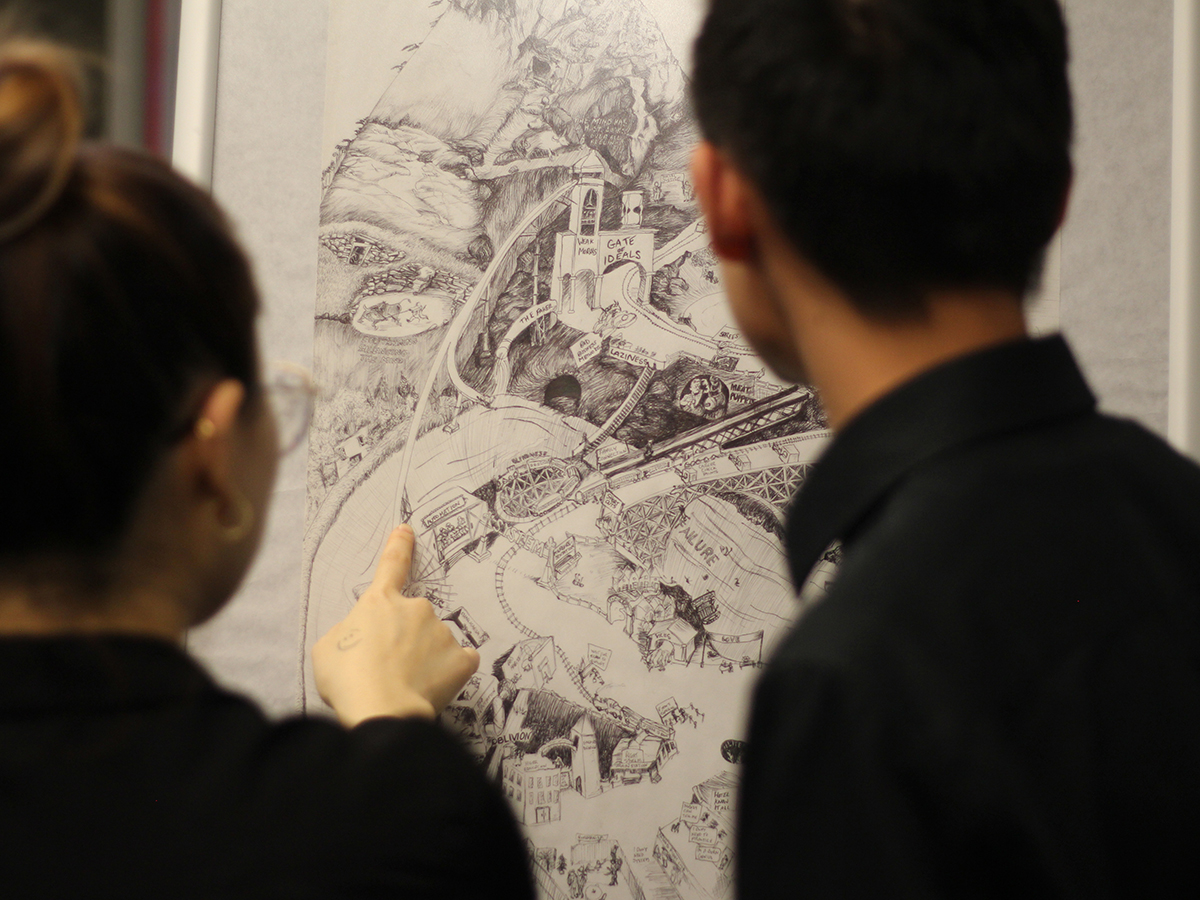Creative industry researchers reveal new work at fifth annual RUBIX showcase

Professor of fashion design Danielle Martin presented a selection of dresses and materials that she has produced in her ‘handDress in becoming’ project.
A digital map of filming locations in Toronto, 3D-printed military facilities and dresses inspired by the shape of human hands were among the exhibits at the fifth annual RUBIX showcase held by the Faculty of Communication and Design (FCAD) at Ryerson University. Thirty-nine exhibitors from FCAD’s nine schools — representing fields from fashion and performance to journalism and image arts — presented their most recent scholarly, research and creative projects at the event, which was held at The Catalyst on Monday, November 4.
At the opening of the showcase, Steven N. Liss, Ryerson’s vice-president, research and innovation, said the work on display highlighted FCAD’s focus on the collision of creative ideas from different areas of expertise. He noted that this interdisciplinary approach produced phenomenal opportunities for students and reflected a collaborative ethos that ran throughout the university.
“RUBIX is a great way to showcase some remarkable work, and I am very excited to be here, to walk around and to see some of the things that are going on in the faculty,” he said. “It’s truly inspiring — whether it’s figuring out ways of mapping success, or working in ways which support our collaborations with Cirque du Soleil or TIFF.”
As part of ‘Audible Oceans’, a research project into the cultural history of sonar, professional communications professor John Shiga discovered that the United States built secret military facilities in Canada during the Cold War to spy on enemy submarines. Archival research led him to an abandoned base in Nova Scotia, which had formed part of one of the largest sonar networks ever built. According to professor Shiga, Canadians living nearby have very little information about its significance. He used drones to scan the Nova Scotia site and, with colleagues Hugh Elliott, Taylor Maclean and Jimmy Tran, created 3D-printed models and video displays of the complex.
“Very few people know this — I didn’t know this until a couple of years ago — there were a couple of listening stations in Canada. They were in positions that were very strategically located, close to sound channels in the ocean,” said professor Shiga. “There’s a general sense in the communities that it had something to do with the military, but beyond that they don’t know what it was used for.”

Professor of professional communications John Shiga displayed 3D-printed models of military buildings that he discovered during his investigation into the cultural history of sonar.
Danielle Martin, a professor of fashion design and creative direction, presented a project titled ‘handDress in becoming’, an exhibition of dresses that illustrate the importance of handwork in fashion. To do this, she studied the appearance and movement of hands and translated these features into her dresses — the fabric represents the shade of a hand, the material is layered five times to evoke fingers, and hems are outlined with tight embroidered lines. Her exhibit showed different stages of her creative process and included early designs and photographs that she took of a hand moving.
Professor Martin’s handwork also includes bobbin lace, which she says is made using one of the slowest and most intricate processes in luxury fashion. In her different creative projects, she investigates handmade work, as well as the potential of 3D-printing technology for fashion.
RTA School of Media professor Lori Beckstead and radio and media production student Anna Ashitey presented their study, ‘Pass the Mic: Women Finding Space on Air’, which investigated the experiences of women who work in the Canadian radio industry. The researchers have compiled these stories on a website and made a specially designed radio that plays audio recordings of interviews with the women.
“The findings were primarily that women do experience sexism in the radio industry,” said professor Beckstead, who explained the majority of interviewees reported experiencing sexism. “Many women cited that they felt they were getting paid less than men doing the same work. But most women felt that things were changing and getting better. There were some women that felt that they hadn’t experienced any type of sexism or different treatment based on their gender.”
A project called ‘!Toronto’ was presented by image arts professor Dave Kemp. He said that while many Toronto residents are aware that their city is a common filming location for the movie industry, few people know about the sheer volume of filming that occurs in Toronto for productions that portray it as a different city. Working with professor emeritus Alexandra Anderson, professor Kemp has created a digital map of Toronto that shows the filming locations of hundreds of movies that were released between 1946 and 2018.
“On one level, that could be OK because it brings in industry, but it’s also a little strange in terms of the notion of Canadian identity and also Canadian national cinema, where most of the filmmaking that occurs in Canada does not actually depict Canada as Canada,” said professor Kemp.

Guests at RUBIX discuss Map of Success, a project by RTA School of Media artist Jessica Field.
The project began when professor Anderson and her students started to collect clips for a documentary called Toronto Hides Itself. Professor Kemp then broadened the investigation and created a multi-screen display, which is on display in the Film Reference Library at Toronto’s TIFF Bell Lightbox until February 2020. Areas of the city light up on the digital map as clips from the region are played, along with interviews with major figures from the industry.
In 1913, a music magazine called The Etude published a cartoon called ‘The Road to Success’. One hundred years later, RTA School of Media artist Jessica Field created her own interpretation of the drawing for her project, ‘Map of Success’, which incorporated crowdsourced ideas about the meaning of success. She then digitized the image and inserted intelligent “agents”, which she coded to represent different human behaviours. The figures move around Jessica’s map as they try to go upwards and succeed in society. The figures also respond to inputs from real people, such as guests at events like RUBIX, who input answer to questions about achieving success on a touchscreen console.
Jessica is now five years into her 10-year project and has noted that many of her agents are stuck at the bottom of her road to success and find it difficult to get to the top. At the end of her research, she hopes to contribute to our understanding of what success is, how it is good and bad, and how it affects our psychological states.
(PDF file) Read more about the 2019 RUBIX exhibitors in the accompanying publication